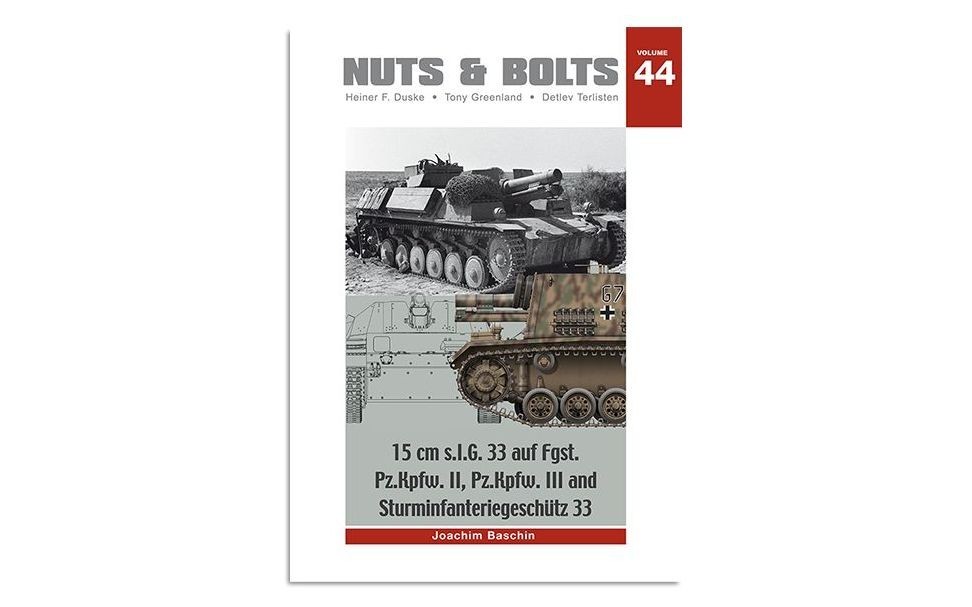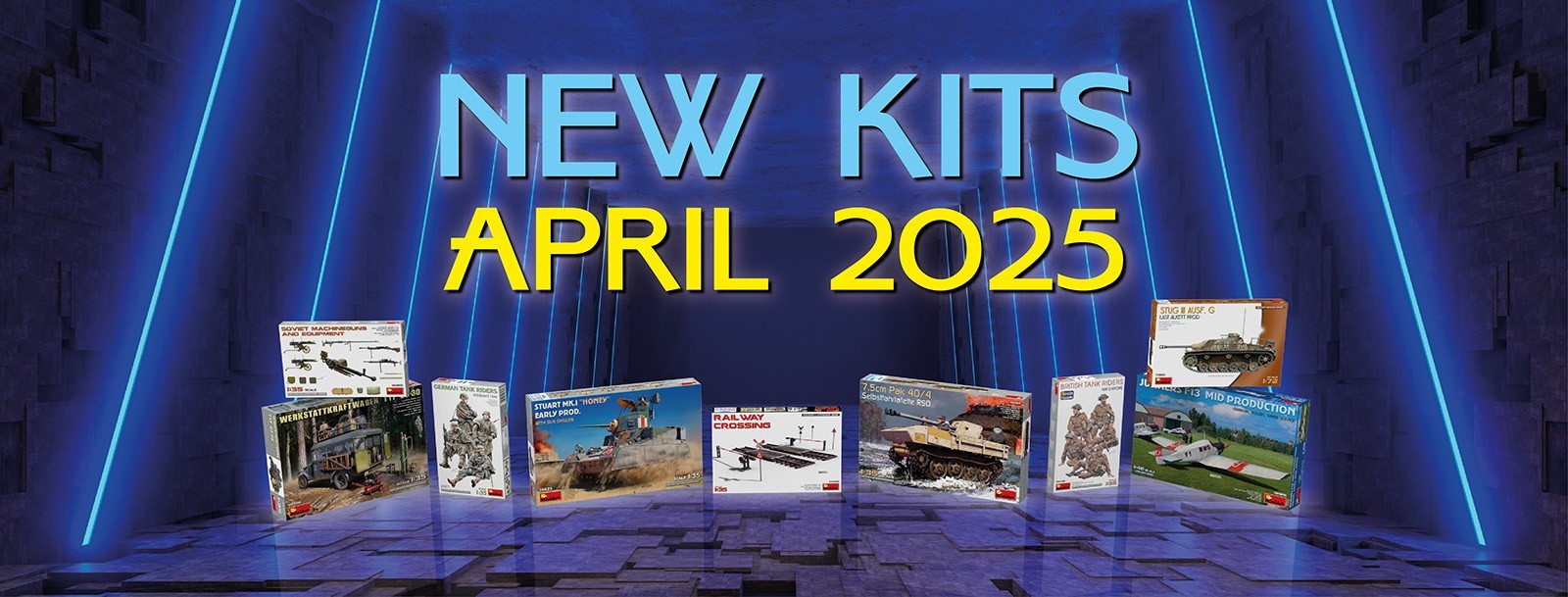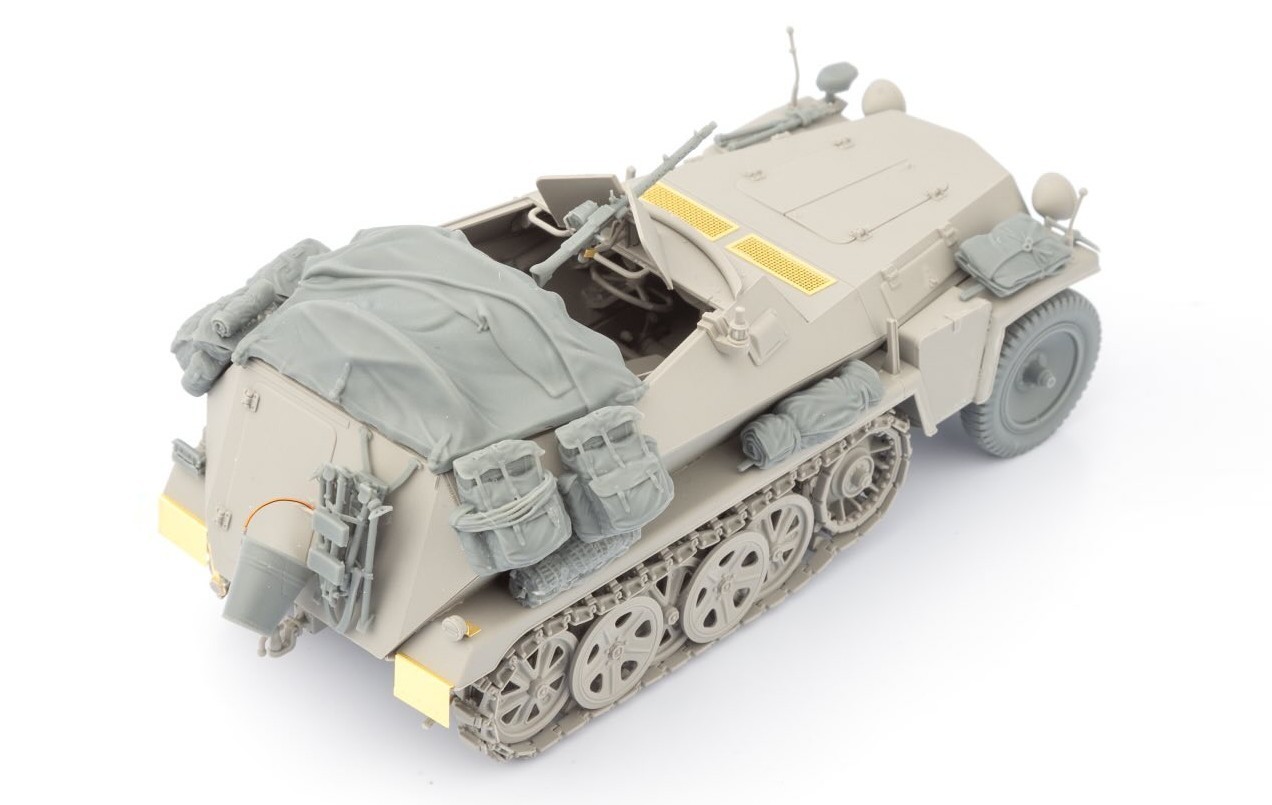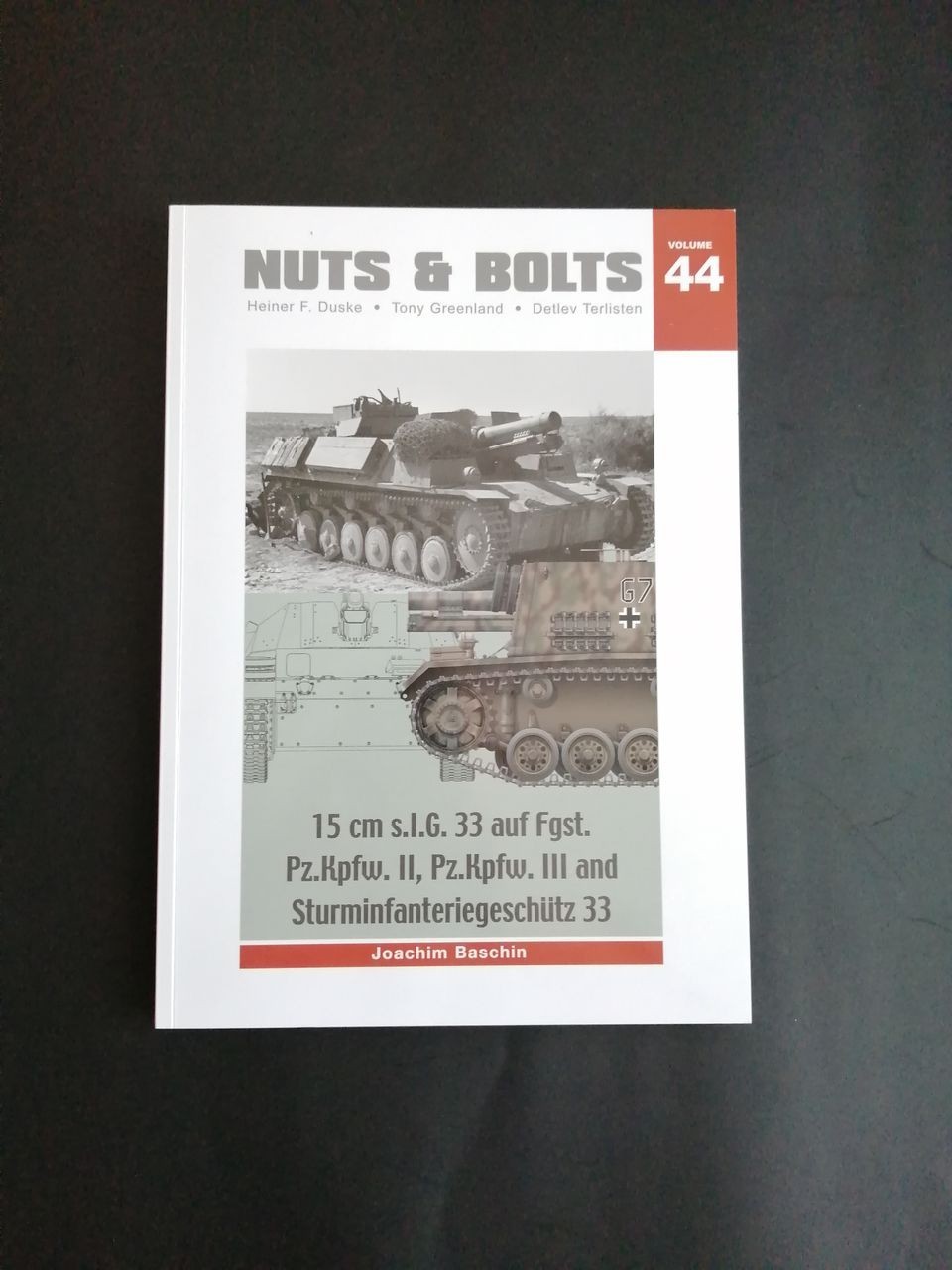
Intro
This Nuts & Bolts Volume 44 is focused on the 15cm s.I.G. 33 (Sfl.) auf Fgst Pz.Kpfw. II, PzKpfw. III and Sturminfanteriegeschütz 33. It closes the series on the different vehicles that carried the schwere Infanteriegeschütz 33, after volumes 19, 22 and 26.
This time, the subject are three vehicles equipped with this gun, the 15 cm s.I.G. 33 B Sfl. on the chassis of the Pz.Kpfw. II, a troop conversion using the chassis of the Pz.Kpfw. III and the Sturminfanteriegeschütz 33.
The book keeps the familiar format of the Nuts & Bolts series, being a softcover A4 volume with 200 pages and different sections for the history of the vehicle, wartime photos, drawings, profiles, preserved vehicles in museums and models. All text is bilingual, in English and German, and has been written by Joachim Baschin.
These three vehicles had short production runs -in fact the Pz.Kpfw. III variant was just a field conversion- and the author has been able to assemble a comprehensive history of its development and use.
The first section is five pages of introduction to the gun itself, with a good amount of information on its variants, features and ammunition use.
Then follows the detailed history of the 15cm s.I.G. 33 auf Fgst Pz.Kpfw. II, from its development to combat service. It is worth to note that this variant was fielded only in Africa, and the book has a very complete account of it. There are photos, reports, loading plans and records for the vessels, combat history and more.
The conversion with a Pz.Kpfw. III chassis is treated briefly, as not much is known of it.
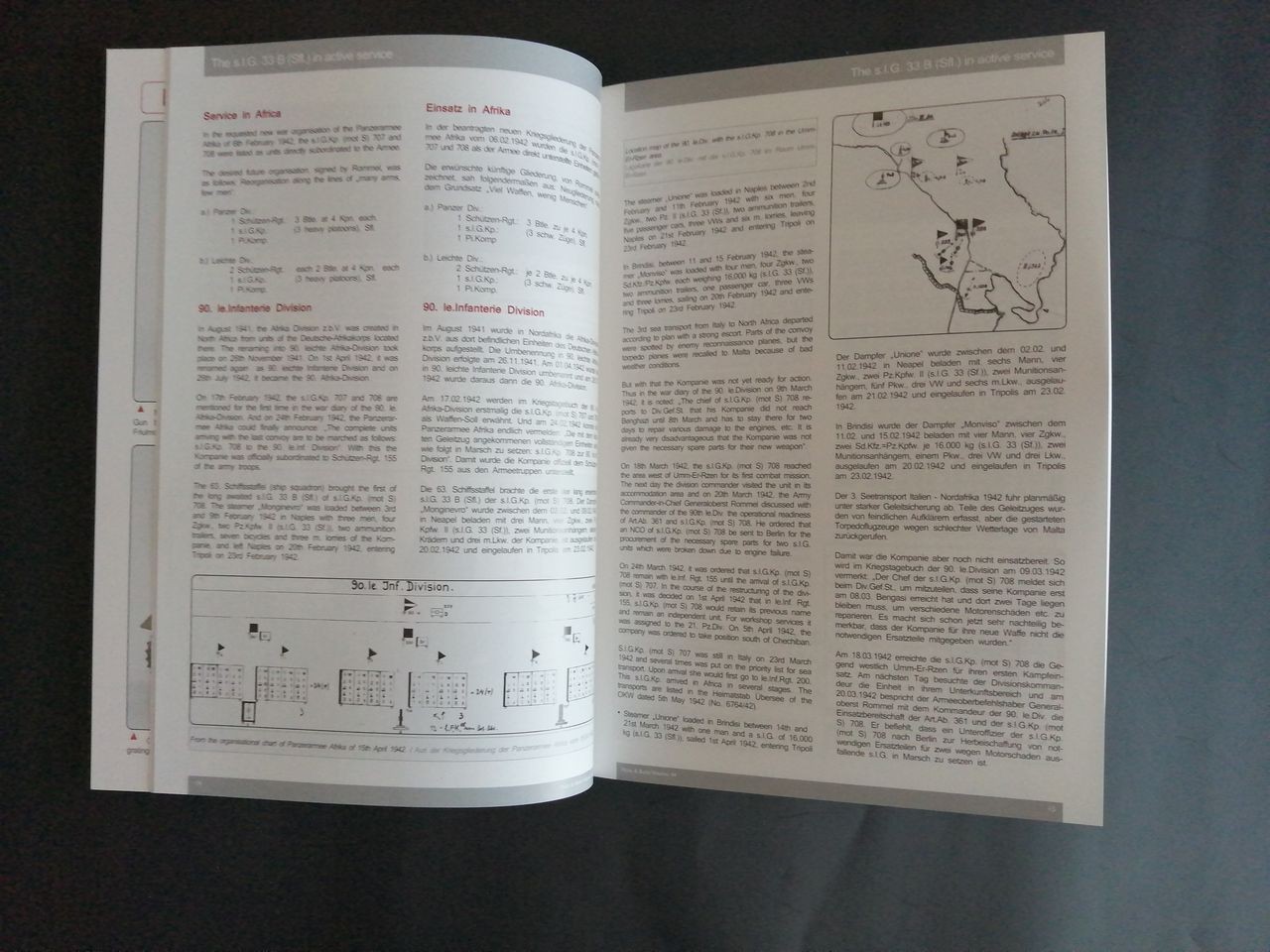
The Sturminfanteriegeschütz 33 is thoroughly covered, with development, features and combat history. Again in this case there was a limited production, just 24 vehicles. The book follows them from Stalingrad to the different units and places where they were employed, always on the eastern front, until their trace is lost in October, 1944.
The modelling section is oddly divided in two, with five pages here where Roland Greth and Joaquin Garcia Gazquez explain their models in more detail than usually found on Nuts and Bolts series, and then again 10 pages at the end of the book with mostly captioned color photos.
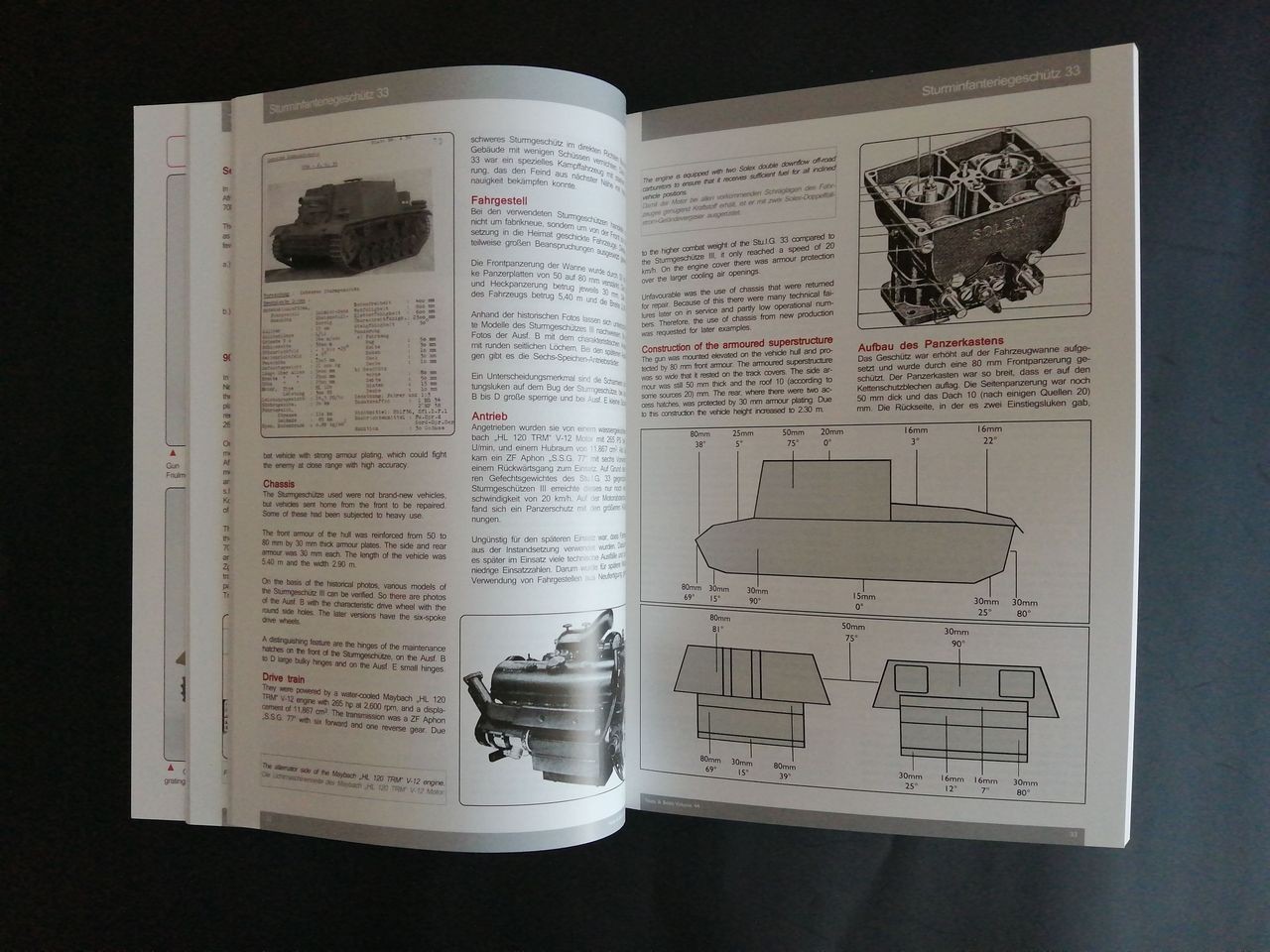
The next 65 pages are full of war time photos of the different vehicles, including also several images of the gun alone. As usual, photos are clear and perfectly reproduced, with informative captions. There are only two or three photos per page, so they are large enough to see them in detail.
The photos cover extensively the service in Africa of the two variants, five and six wheels. There are images of the vehicles with the crew performing different activities like cleaning the barrel, vehicles or themselves, and provide plenty of inspiration for modelling scenes. It is interesting to see also the equipment carried and how dirty they were on the desert.
The photos of the Sturminfanteriegeschütz 33 with all the camouflages it wore, that is Dunkelgrau, whitewashed and different patterns of yellow, brown and green.

The 1/35 drawings section includes at least four views pf the s.I.G 33 gun, the s.I.G. 33 (Sfl.) auf Fgst Pz.Kpfw. II in both five and six road wheels variants, s.I.G. 33 (Sfl.) auf Fgst Pz.Kpfw. III Ausf. H, Sturminfanteriegeschütz 33 on StuG III Ausf. B chassis and Sturminfanteriegeschütz 33 on StuG III Ausf. E chassis. The main versions are shown also on isometric views.
The colour profiles is another classical section of the N&B series, and again of an excellent quality. The drawings have a thumbnail of the image in which they are based.
There are eleven profiles of different vehicles, with a good variety of camouflages, and one for the four types of ammunition used .
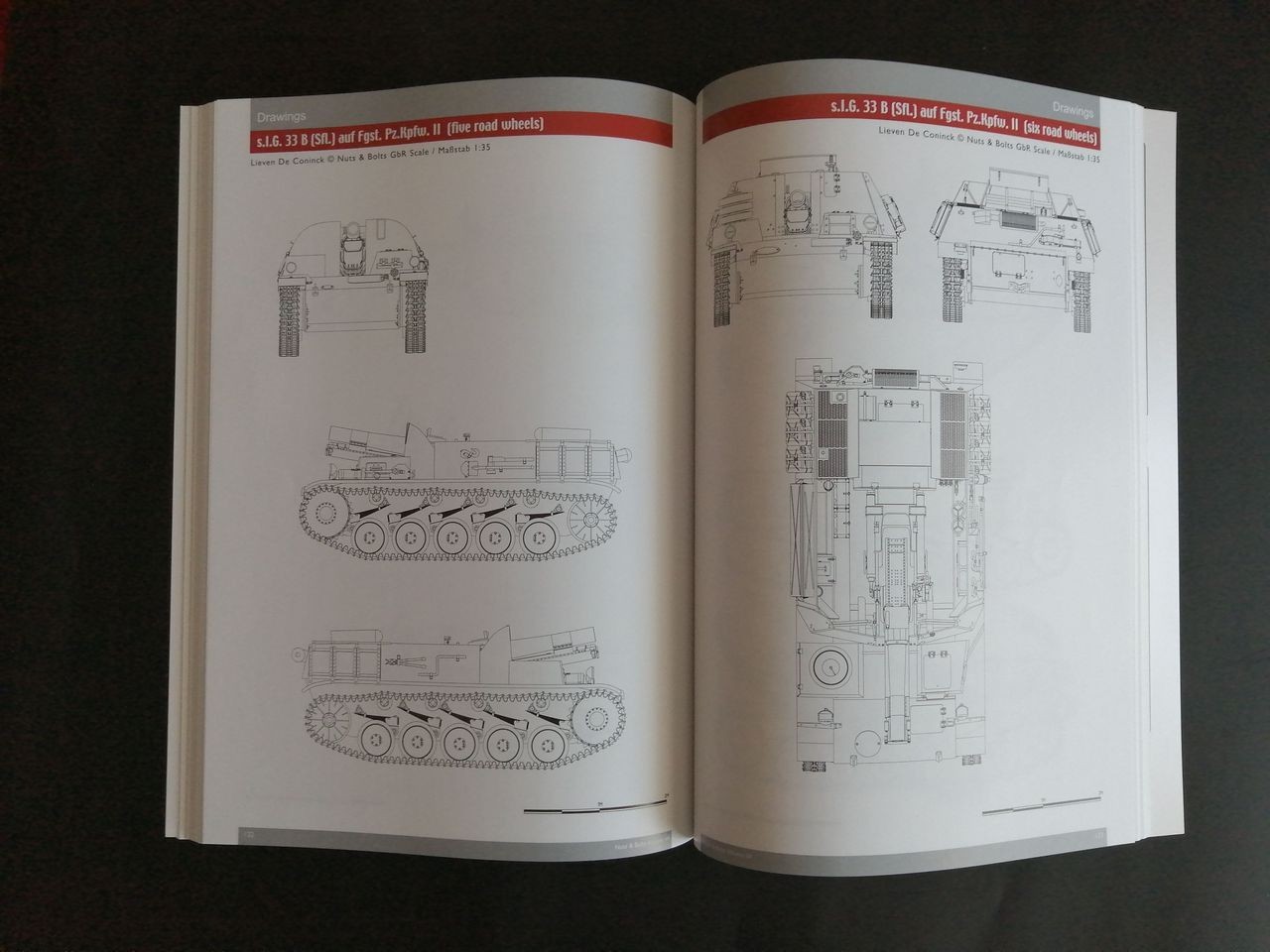
The photos of preserved vehicles are almost all from the Sturminfanteriegeschütz 33, as none of the other vehicles survived. There are four photos of a s.I.G. 33 gun, even one with its Stielgranate 42, and then 33 pages of photos of the Kubinka vehicle. Interestingly, there is a good number of images of the interior.
The last five pages of this section are not from the vehicle but well related and equally useful, as they show the radio equipment, gun sights and personal weapons. These are again detailed photos and can be used as reference for other projects as well.

The final section is about modelling, with full colour photos of the two models previously shown half a book back. Both of them show the high skills of their authors through crisp and detailed photos.
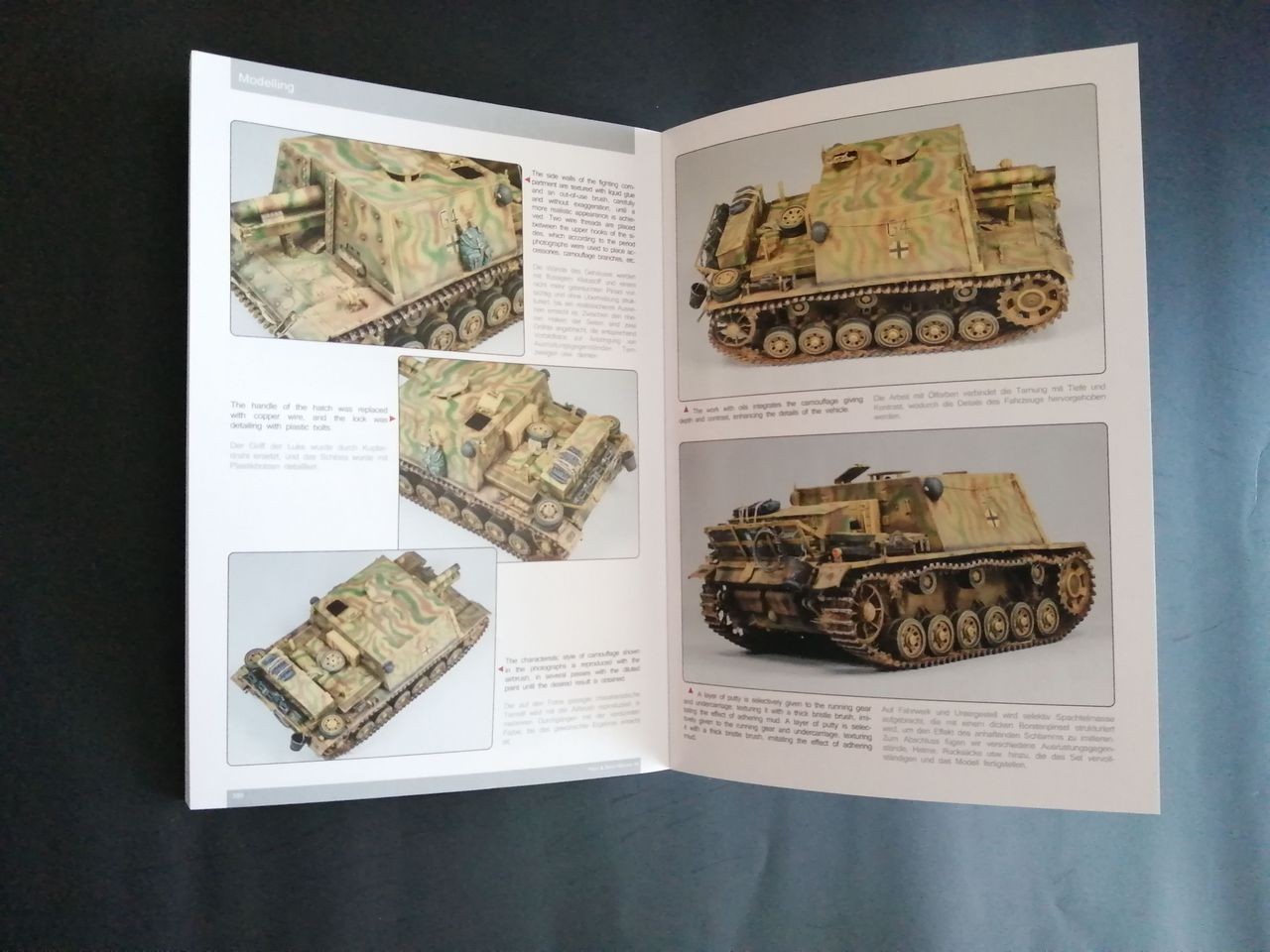
Conclusion
The Nuts & Bolts team has managed to produce again a round product, probably the only reference needed to have a complete view of these vehicles. There is a good selection of war time photos covering all the fronts where they fought, a useful and large walkaround of the only preserved vehicle, including the interior, technical and historical information











